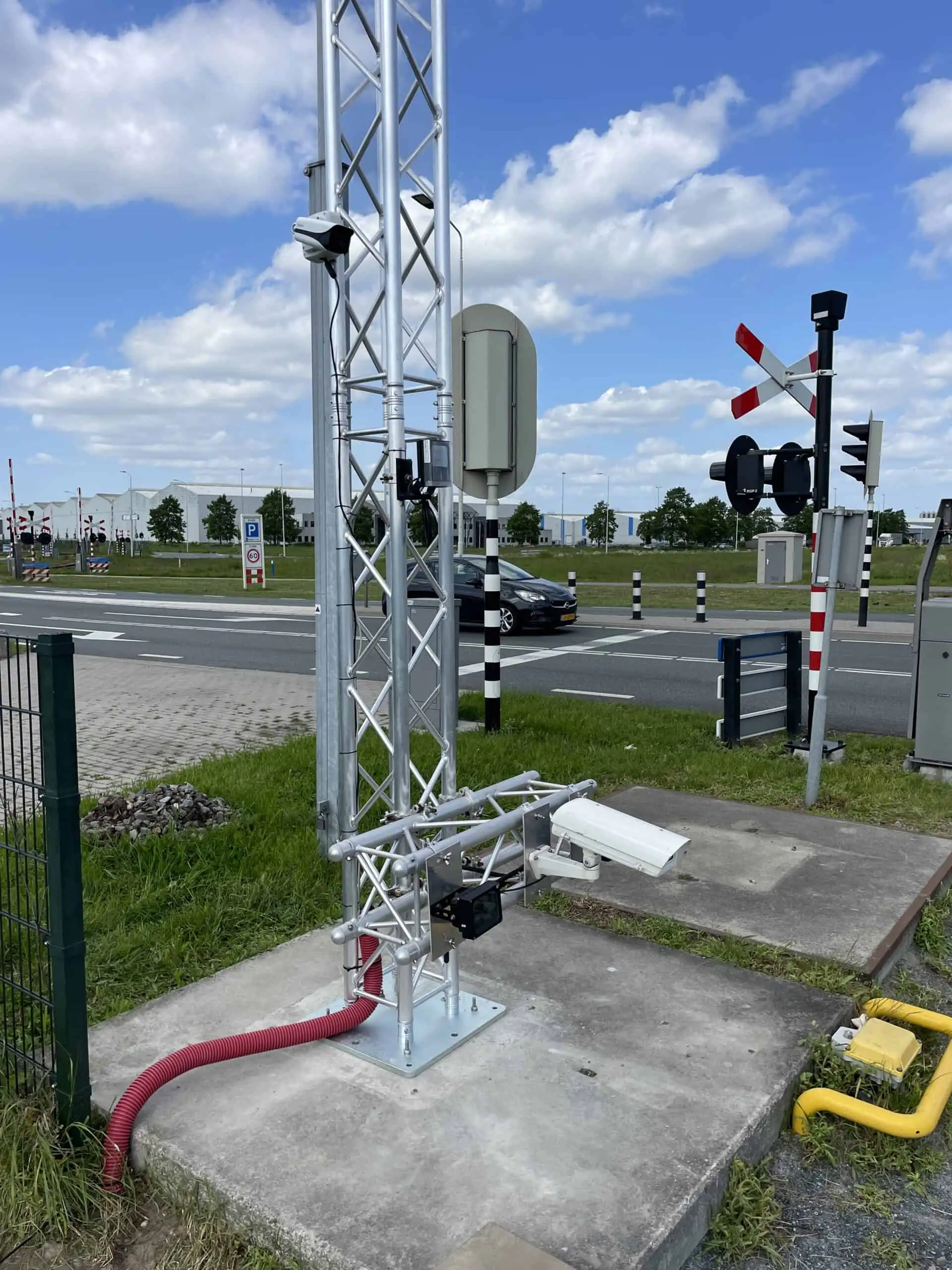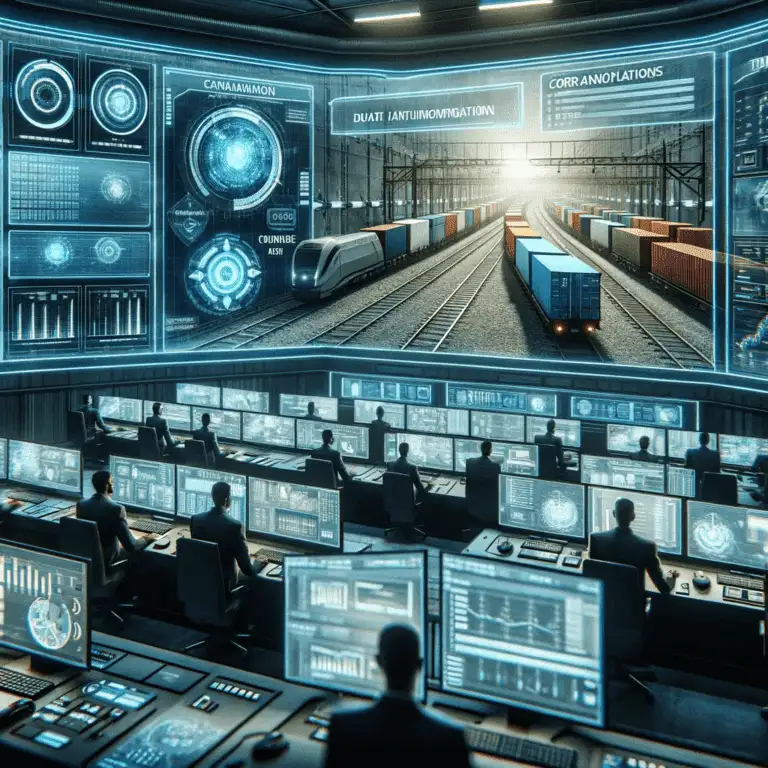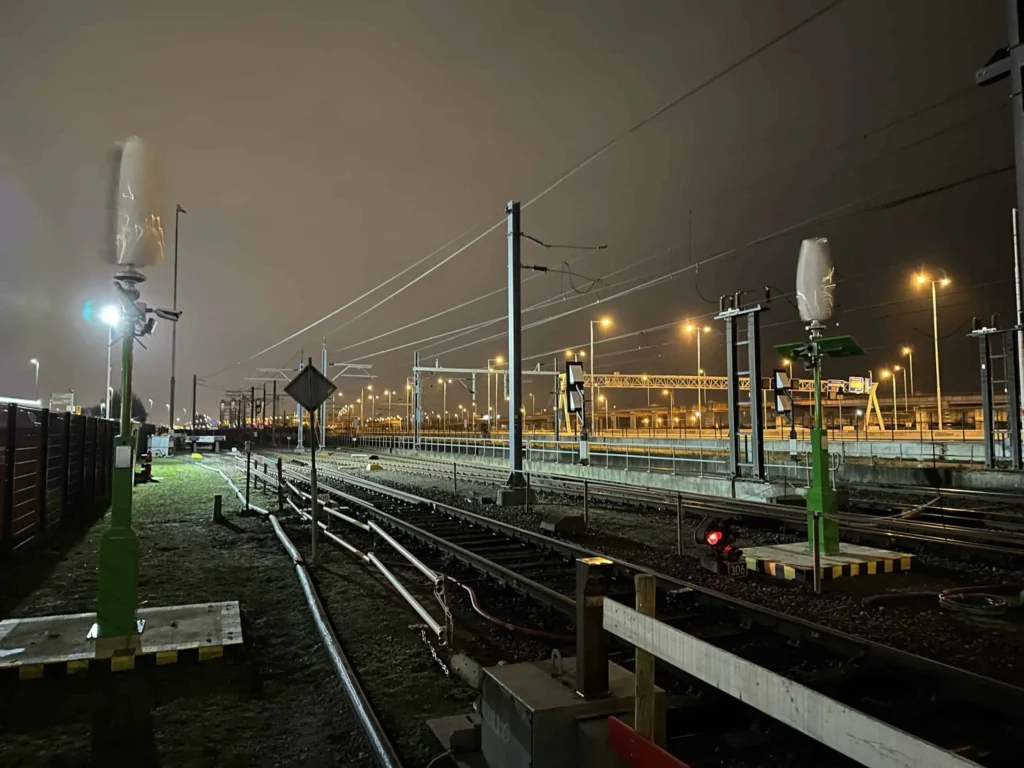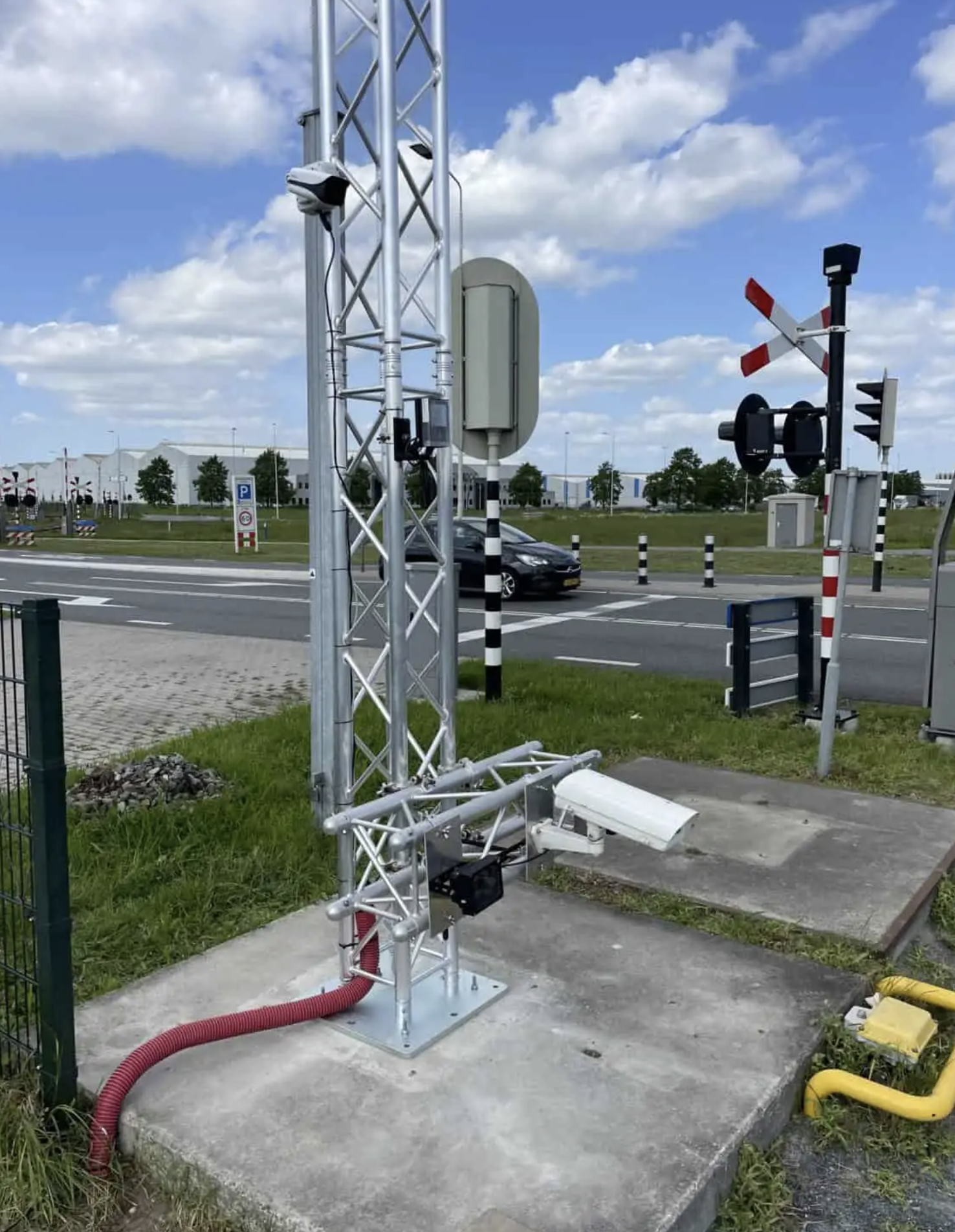Introduction to OCR in the Rail Industry
Optical Character Recognition (OCR) has become a cornerstone technology in the rail industry, revolutionizing how rail operations are conducted. At its core, OCR technology enables the automated reading and interpretation of textual information, transforming printed or written text into machine-encoded text. In the context of the rail industry, OCR systems are pivotal in enhancing efficiency and accuracy across various operational aspects.
Rail OCR systems, specifically designed for railway applications, utilize OCR technology to automate the identification and tracking of railcars and containers. This automation extends to the recognition of ISO codes, critical for international shipping standards, and ensures accurate cargo handling and inventory management. The use of Rail OCR technology significantly reduces manual input and potential human error, leading to more streamlined and reliable operations.
One key application of OCR in the rail industry is the remote visual inspection of railcars and containers. OCR systems, often part of a rail OCR portal, enable operators to remotely inspect and verify container numbers, cargo details, and condition. This remote capability not only increases efficiency but also enhances safety by reducing the need for manual, on-site inspections on rail tracks. Furthermore, OCR technology is crucial in conducting train inventories and damage inspections, essential components of modern rail operations.
Rail OCR: Revolutionizing Railway Operations
Rail OCR technology marks a significant step forward in the automation and digitalization of railway operations. By integrating OCR systems into rail portals and terminals, the rail industry has seen substantial improvements in handling and processing speed, accuracy, and overall operational efficiency.
A rail OCR portal typically encompasses a sophisticated OCR system that is capable of handling various tasks essential to rail operations. This includes the identification of container numbers, ISO codes, and other pertinent shipping information. The advancement in OCR technology, specifically tailored for rail applications, has enabled operators to quickly and accurately process vast amounts of data. This rapid processing capability is crucial in managing the ever-increasing volume of cargo transported via rail, particularly in intermodal operations where time efficiency is paramount.
The implementation of a rail OCR system in terminals has streamlined many processes that were traditionally labor-intensive and error-prone. For instance, rail OCR systems have automated the task of matching containers to specific railcars, thereby enhancing the accuracy of train inventories. This automation extends to damage inspection processes as well, where OCR software is utilized to detect and document the condition of containers and railcars. Such automation not only speeds up operations but also contributes significantly to cost savings by reducing manual labor and minimizing errors.
In conclusion, rail OCR technology, through its advanced OCR systems and software, has become an integral part of modern railway operations. It not only supports the efficiency and accuracy of rail processes but also drives forward the industry’s move towards comprehensive automation.

Railway OCR: Enhancing Efficiency and Accuracy
The integration of Railway OCR systems has marked a significant leap in enhancing the efficiency and accuracy of rail operations. Rail OCR portals, equipped with advanced OCR technology, have revolutionized the way rail equipment and containers are identified and tracked. One of the key aspects of this technology is the ability to accurately identify ISO codes, ensuring adherence to international standards in intermodal transport.
Rail OCR portals provide solutions that extend beyond mere identification; they are crucial in performing train inventories and managing the logistics of containerized cargo that moves via the rail.
The data collected from these systems is integral to optimizing rail handling systems. For operators, this means an unprecedented level of control and oversight over the entire rail handling process.
The OCR system in these portals captures high-quality images and processes them to extract vital information. This includes the specific train number, the exact location of each container on a train, and details on equipment condition and damage. This comprehensive approach to data collection and processing ensures that rail terminals operate with a higher degree of precision and efficiency, significantly reducing the need to manually perform train inventories and inspections.
The Role of Artificial Intelligence in Rail OCR
The incorporation of Artificial Intelligence (AI) in Rail OCR systems marks a transformative phase in rail operations. AI-driven OCR software communicates everything from the list of all loaded trains to the intricate details of each container and railcar. This integration of AI has made rail OCR portals not only more efficient but also more adaptive and accurate.
In the realm of safe rail handling, AI-powered OCR systems play a pivotal role. They can process every train passage through the rail terminal, ensuring safe and efficient handling of both the train and its cargo. For operators, this means a significant reduction in operational risks and enhanced monitoring capabilities.
Supplai’s Rail OCR Portal, for example, utilizes AI to streamline the identification and inventory process of rail cars. The OCR software’s ability to capture damage inspection images and process detailed information about arrival and departure times transforms traditional rail operations into a fully automated and reliable system. They also use this for their Gate OCR solution.
With AI, the rail OCR system becomes an integrated system, capable of making real-time decisions and providing operators with actionable insights. This level of automation in the rail OCR portal provides a solution that not only enhances the efficiency of rail terminals but also propels the entire industry towards a more advanced, interconnected future.

Integrating Rail OCR with the Rail Operating System (ROS)
Integrating Rail OCR with the Rail Operating System (ROS) is a pivotal step in advancing rail technology. This integrated system creates a seamless connection between OCR technology and the broader rail network management, enhancing operational efficiency and accuracy. The advanced software used in this integration enables operators to process every train passage through the rail terminal with precision, ensuring that every container on an identified railcar is accurately tracked and recorded.
The ROS, equipped with sophisticated software, provides an operator app that allows for real-time tracking and management of loaded trains and containers. This system significantly reduces the need to manually perform train inventories, as the OCR features of the integrated system automatically capture and track all relevant data. This includes the exact location of each container, the condition of each container, and any relevant information about dangerous goods.
Video Processing vs. Photo Processing in Rail OCR
The advancement of Rail OCR (Optical Character Recognition) technology has increasingly favored video processing over traditional photo processing. This shift is primarily due to the dynamic capabilities of video processing, enhanced by artificial intelligence and robust processing power, which now allow for real-time, continuous monitoring and data collection in rail operations.
Video processing, with its continuous stream of data, offers a comprehensive view of rail activities. This method is particularly adept at capturing moving objects, making it ideal for tracking railcars and containers in motion. The integration of AI in video processing has been a game-changer, enabling the analysis of vast amounts of video data with greater accuracy and efficiency. AI algorithms can identify and track rail equipment, assess conditions, and even detect potential issues, all in real-time.
This approach is advantageous in monitoring train movements, providing a level of detail and situational context that static images cannot match. The ability to process and analyze video data on the fly translates to more informed and timely decision-making in rail operations.
The reliance on video processing in rail OCR systems aligns with the industry’s push towards more automated and intelligent systems. As technology continues to advance, the preference for video processing in rail OCR is expected to grow, further enhancing the efficiency, safety, and accuracy of rail logistics and operations.
Exploring Optical Character Recognition in Rail Systems
Optical Character Recognition (OCR) technology is revolutionizing the rail industry, especially in terms of container and railcar identification and inventory management. The OCR system, particularly in the form of a rail OCR portal, is equipped with renowned camera systems capable of capturing high-quality images of rail equipment. These images, along with their corresponding equipment number information, are crucial for ensuring the accurate identification and tracking of rail assets.
OCR technology in rail systems facilitates the automated container-to-railcar association, which is essential in the efficient operation of marine container terminals. This fully automated system captures damage inspection images, enabling operators to verify equipment condition and damage upon arrival and departure. The OCR portal solutions also include dedicated software that tracks and archives the image and equipment number information, ensuring that the identification and inventory of rail cars are carried out with high precision and efficiency.
Key OCR Features in Rail Systems
Rail OCR systems are equipped with a range of key features that significantly enhance rail operations. One such feature is the train gate, an integral part of the portal system, which facilitates the smooth processing of containerized cargo that moves via rail. These gates are often part of a fully automated train OCR portal, ensuring that the processing of data is swift and accurate.
Another crucial feature is the ability to identify non-ISO container numbers, which broadens the scope of OCR systems to handle various types of cargo. The OCR software precisely determines the exact position of every container on an identified railcar, streamlining the inventory process. This eliminates the need to manually perform train inventories, saving considerable time and resources. The system also tracks the condition and damage during arrival, ensuring that any issues are promptly addressed.

Conclusion and Future Outlook
Looking ahead, the future of rail OCR technology appears promising, with continuous advancements expected in tracking technology solutions. As the industry progresses, the reliance on manual processes, like manually performing train inventories, is expected to diminish significantly. The rail industry continues to evolve, and with it, rail OCR technology is set to play an even more pivotal role.
The integration of OCR technology in rail systems has already demonstrated significant improvements in operational efficiency and accuracy. As operators increasingly utilize the train gate operator and other advanced features, the benefits become even more apparent. In the coming years, the shift towards fully automated systems is likely to accelerate, marking a new era in rail transport efficiency and safety.
Frequently Asked Questions About Rail OCR
Rail OCR technology, a fusion of optical character recognition and advanced rail logistics, is transforming the railway industry. This FAQ section aims to address common questions about Rail OCR, shedding light on its functionality, benefits, and impact on rail operations. Whether you’re a railway operator, logistics expert, or simply curious about this innovative technology, these FAQs are designed to provide valuable insights and clarity.
How Does the Integration of AI Enhance the Capabilities of Rail OCR Systems?
The integration of Artificial Intelligence (AI) into Rail OCR systems enhances their capabilities significantly. AI algorithms can process large volumes of data rapidly, identify patterns, and make predictive analyses. This leads to higher accuracy in identification, better fault detection, and predictive maintenance capabilities. AI integration enables Rail OCR systems to adapt to various operational conditions, improving their reliability and efficiency, which is crucial in the fast-paced railway industry.
What are the Key Differences Between Video Processing and Photo Processing in Rail OCR?
In Rail OCR, video processing involves capturing continuous footage, offering real-time monitoring and dynamic data capture. It’s ideal for tracking moving trains and providing comprehensive operational insights. Photo processing, on the other hand, captures still images at specific points, useful for detailed inspections and condition assessments. Video processing, enhanced by AI, excels in ongoing surveillance, whereas photo processing is better for high-resolution, static evaluations.
How Does Rail OCR Improve Safety and Efficiency in Rail Operations?
Rail OCR improves safety by minimizing the need for manual inspections, reducing human error and on-site accidents. It enhances efficiency by automating data capture and processing, leading to quicker and more accurate cargo handling and inventory management. By providing real-time data and analytics, Rail OCR systems help in making informed decisions, optimizing workflows, and reducing operational delays, thereby increasing overall safety and efficiency in rail operations.
What are the Benefits of Using Rail OCR in Intermodal Transportation?
Rail OCR offers several benefits in intermodal transportation, including enhanced operational efficiency, reduced dwell times, and improved tracking and tracing of cargo. It facilitates seamless integration of different transport modes by automating the identification and tracking of containers and railcars. This automation leads to more efficient cargo transfers between ships, trucks, and trains, reducing manual errors, improving turnaround times, and enhancing overall supply chain efficiency.
How Does Rail OCR Assist in the Management of Containerized Cargo?
Rail OCR significantly streamlines the management of containerized cargo by automating the identification and tracking processes. It accurately captures container numbers and details, ensuring precise inventory management. This leads to efficient cargo handling, reducing errors and delays in the supply chain. Additionally, Rail OCR supports real-time tracking, enhancing the transparency and reliability of cargo movement in the logistics network.
What Role Do Advanced Camera Systems Play in Rail OCR Technology?
Advanced camera systems are the backbone of Rail OCR technology. They capture high-quality images and videos, which are essential for accurate data capture and processing. These cameras work under various environmental conditions, ensuring consistent performance. Their ability to capture detailed visuals of containers and railcars enables the OCR system to extract vital information, crucial for effective rail operations management.
How Does Rail OCR Contribute to Automated Container-to-Railcar Association?
Rail OCR contributes to automated container-to-railcar association by using advanced imaging and data processing techniques. It identifies containers and matches them with the correct railcar, ensuring accurate and efficient loading and unloading processes. This automation reduces manual handling, minimizes errors, and speeds up the entire process, significantly enhancing operational efficiency in rail logistics.
In What Ways Can Rail OCR Technology Reduce the Need for Manual Train Inventories?
Rail OCR technology reduces the need for manual train inventories by automating the identification and tracking of railcars and containers. With its capability to capture and process data quickly and accurately, Rail OCR eliminates the time-consuming and error-prone process of manual counting and recording. This automation leads to more accurate inventory management, streamlined operations, and considerable time and resource savings.
How Does Rail OCR Technology Integrate with Existing Railway Operating Systems?
Rail OCR technology integrates seamlessly with existing railway operating systems by providing accurate and real-time data essential for efficient operations management. This integration allows for enhanced coordination between different components of the railway system, from cargo handling to scheduling and maintenance. The data provided by Rail OCR systems ensures that operational decisions are based on accurate, up-to-date information, leading to improved overall efficiency and effectiveness in rail operations.
